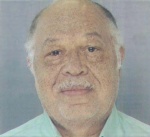3 February
2011
The Kermit Gosnell Case: Portrait of the Culture of Death
Posted in Abortion, Culture, Human Life, Human Rights, United States of America
Type the name of serial killer Harold Shipman into the search function on the BBC News website and you will find 587 news items. Crossing the Atlantic, and more recently, try a search for ‘Tucson shootings’ and you find 37, while a search for murdered abortionist George Tiller turns up 17 stories. Type in ‘Kermit Gosnell’ and the search offers just one item. It is understandable then, that you may ask who this man is and why he matters.
Last week a grand jury in the U.S. recommended a series of murder charges against Dr. Kermit Gosnell, an abortionist in Philadelphia. The District Attorney described Gosnell’s clinic as a ‘house of horrors’ in which investigators found ‘bags and bottles holding aborted fetuses, jars, lining shelves with severed feet’. The Philadelphia Inquirer reported: ‘Semiconscious, moaning women sat in dirty recliners and on bloodstained blankets. The air reeked of urine from the flea-infested cats permitted to roam the clinic. There was blood on the floor and cat feces on the stairs.’ The 261-page grand jury report found that Gosnell ‘regularly and illegally delivered live, viable, babies in the third trimester of pregnancy – and then murdered these newborns by severing their spinal cords with scissors.’ He once joked that one of these children was so far developed that it could ‘walk [him] to the bus stop’. Most disturbingly, it was found that: ‘Over the years, many people came to know that something was going on here. But no one put a stop to it.’
I shall spare you further details, but it is sobering to reflect not just on the magnitude of these crimes, but on the complete non-response of the media to what must objectively qualify as one of the most shocking series of mass murders in our times. Although indicted for the murder of seven specific children, as well a woman who died after undergoing an abortion at Gosnell’s hands, the jury surmised that the actual numbers of infant victims run into hundreds. One article quotes an attempt to justify the fact that no-one had reported what was happening inside the clinic – ‘it’s a low priority when you’re trying to figure out how to pay your electric bills’, said Susan Schewel of the pro-abortion Women’s Medical Fund.
Not until now has the so-called ‘culture of death’ been painted publicly in quite such graphic colours, despite attempts by some in the media to ignore the case. The philosophy of the culture of death was perhaps best summed up in a line from the majority judgment of the U.S. Supreme Court in the famous case of Planned Parenthood v. Casey (1992): ‘At the heart of liberty is the right to define one’s own concept of existence, of meaning, of the universe, and of the mystery of human life.’
It is not difficult to understand why this concept of liberty is attractive, even paradisiacal. The human heart conceals within itself a natural desire for freedom, and therefore will naturally be drawn by such siren songs of absolute and unrestrained liberty. Yet, this promise of a paradise in which we each self-define our own universes is a false one. In the attempt to reconstruct ourselves, we can only destroy ourselves and others. The ‘universe’ includes not only us, but other human beings as well, whilst ‘the mystery of human life’ is not something possessed or defined by one individual, but a reality in which billions participate. If everyone has the right to redefine the nature of the universe and of human life in a manner of their own choosing, whose definition triumphs when we disagree? The real answer to this question lies not in a neatly formulated syllogistic argument, but in the image of Kermit Gosnell slitting the throats of newborn babies in his squalid clinic. If human life is something we can redefine at will, then the definition of the most powerful group is the one imposed on all others, even at the cost of their lives. Might becomes right in such a situation, and whoever is first to cut the other’s throat attains to the fullness of the perverse kind of ‘liberty’ spoken of by the Supreme Court.
Whilst some Western states crusade around the globe promoting their own arbitrary concepts of human rights, the unborn – and even live infants – in our midst, are increasingly treated as little more than consumer goods to be discarded on a whim. ‘No child should be born unwanted’ goes the rallying cry of the abortion lobby, as if children were products on supermarket shelves whose value can somehow be defined by how much someone else wants them.
The rotten fruits of this mentality – which conceals behind the rhetoric of liberty and choice a burning hatred for the most vulnerable members of society – are laid bare for all to see in the Kermit Gosnell case. Harold Shipman tried to deny his awful crimes. The infamous Yorkshire Ripper tried to justify his murders by the ridiculous suggestion that God had told him to murder prostitutes. However twisted, there was perhaps – in the act of denying or attempting to justify their acts – some faint realisation of the intrinsic value of human life. But Kermit Gosnell was simply dumbfounded. ‘Is it possible you could explain the seven counts?’ he asked. ‘I understand the one count because of the patient who died but not the others.’ ‘It was tremendously traumatic – totally unexpected,’ said Gosnell of the raid on his clinic. ‘I was told that I knew what this was about. But I really didn’t know.’ Welcome to the culture of death.
Related Posts:



Leave a Reply